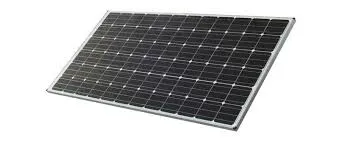solar panel how its made
How Solar Panels Are Made A Detailed Overview
Solar panels have become a crucial element in the transition towards renewable energy sources. They harness sunlight and convert it into electricity, enabling us to power our homes, businesses, and even vehicles while reducing our carbon footprint. But how exactly are these innovative devices made? Let’s take a closer look at the intricate process involved in the production of solar panels.
Raw Materials
The primary material used in the majority of solar panels is silicon, a semiconductor that has properties ideal for converting sunlight into electricity. Silicon is abundant in nature, primarily found in quartz sand. The journey begins with the extraction and refinement of high-purity silicon from quartz. This process involves several stages including crushing, purifying, and finally melting the silicon.
In addition to silicon, solar panels consist of other materials such as metals (usually aluminum for the frame and copper for wiring), glass for the protective outer layer, and various polymer materials for encapsulation. Each of these components plays a vital role in the overall efficiency and durability of the final product.
Manufacturing Silicon Wafers
Once high-purity silicon has been obtained, it is transformed into ingots through a method known as crystallization. Two common methods for this are the Czochralski process and the float-zone process. After the silicon has cooled and solidified into ingots, these ingots are sliced into thin wafers, typically about 200 to 300 micrometers thick. These silicon wafers are the fundamental building blocks of solar cells.
During this phase, the wafers undergo doping, a process where small amounts of other elements like phosphorus or boron are added to alter their electrical properties. This process creates a p-n junction, enabling the wafers to effectively generate electricity when exposed to sunlight.
Solar Cell Production
The next step involves converting these silicon wafers into solar cells. This entails applying a series of layers and coatings onto the silicon to enhance its ability to capture sunlight. A thin layer of anti-reflective coating is applied to reduce the amount of light that gets reflected away from the cell, ensuring maximum absorption of sunlight.
solar panel how its made

After layering, electrical contacts are added to allow for the collection of the electricity generated. These contacts are typically thin strips of metal that run along the surface of the solar cell. The cells are then tested for efficiency and performance, ensuring they meet specific standards before moving onto the assembly stage.
Assembling Solar Panels
Once the solar cells are produced, they are arranged into a solar panel. This involves placing the solar cells onto a backing material, which is often made of a durable polymer or fiberglass. The cells are connected through metallic ribbons to allow for the flow of electricity.
The assembled solar cells are then encapsulated with a layer of polymer and a protective glass layer is added on top. This combination provides durability and protection against environmental factors such as moisture, dirt, and UV exposure. The edges of the panel are sealed to prevent water intrusion and ensure longevity.
The final step in the assembly process is framing the solar panel. An aluminum frame is attached to provide stability and support, making the panel easier to install on various surfaces such as rooftops or ground mounts.
Quality Control and Testing
Quality control is paramount in the manufacturing of solar panels. Each panel undergoes rigorous testing to check for defects and ensure they meet performance standards. This includes tests for electrical output, resistance to environmental stressors, and overall durability. Solar panels must comply with international standards such as IEC 61215 and IEC 61730, ensuring they are safe and reliable for consumer use.
Conclusion
The process of making solar panels is a complex yet fascinating amalgamation of science and engineering. From extracting silicon to assembling the final product, every step is designed to maximize efficiency and ensure longevity. As technology continues to evolve, the hope is that solar panel production will not only become more efficient but also more sustainable, paving the way for a brighter, greener future powered by renewable energy. The shift towards solar energy represents a significant stride in global efforts to combat climate change, making the understanding of how these panels are made all the more critical.
-
String Solar Inverter: The High-Efficiency Solution for Smart Solar EnergyNewsJul.14,2025
-
Revolutionizing Rooftop Energy with the Power of the Micro Solar InverterNewsJul.14,2025
-
Power Independence with Smart Off Grid Solar Inverter SolutionsNewsJul.14,2025
-
On Grid Solar Inverter: Powering the Future with Smart Grid IntegrationNewsJul.14,2025
-
Monocrystalline Solar Panels: High-Efficiency Power for the Future of Clean EnergyNewsJul.14,2025
-
Bifacial Solar Panel: A Smarter Investment for Next-Generation Energy SystemsNewsJul.14,2025







